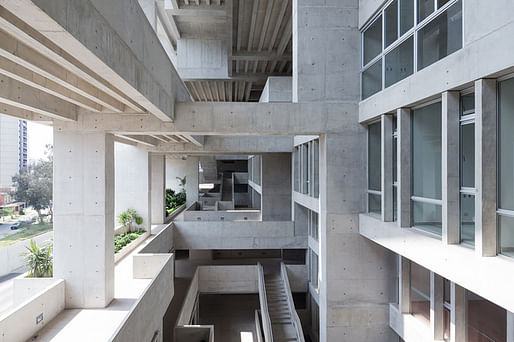
Today in Venice, the President of La Biennale di Venezia, Paolo Baratta, and curators Yvonne Farrell and Shelley McNamara announced the theme of the 2018 Architecture Biennale. Entitled “Freespace”, next year’s exhibition will present “a generosity of spirit and a sense of humanity at the core of architecture's agenda, focusing on the quality of space itself.”
Back in January, when the curators were announced, Baratta remarked of 2018’s curatorial agenda:
“The Exhibition curated by Alejandro Aravena offered visitors a critical overview of the worldwide evolution of architecture and underlined how important it is that a qualified demand on the part of individuals and communities be met by an equally effective response, thereby confirming that architecture is one of civil society’s instruments for organizing the space in which it lives and works.
Along these lines, Yvonne Farrell and Shelley McNamara will continue to address the same theme but from the point of view of the quality of the public and private space, of urban space, of the territory and of the landscape as the main ends of architecture.”

While Farrell and McNamara’s theme promises to investigate architecture’s civil engagement, it dramatically shifts from Aravena’s focus on architecture’s response to a broader range of social issues, such as “segregation, inequalities, peripheries, access to sanitation, natural disasters, housing shortage, migration,” and places emphasis on how architecture’s formal qualities can foster a sense of emotional goodwill and physical nourishment in its localized environment.
“With the theme of Freespace, the Biennale Architettura 2018 will present for public scrutiny examples, proposals, elements—built or unbuilt—of work that exemplifies essential qualities of architecture which include the modulation, richness and materiality of surface; the orchestration and sequencing of movement, revealing the embodied power and beauty of architecture,” remarked the curators at today’s press conference.

“Freespace” will attempt to communicate how architecture becomes a fixture and active player in informing people’s daily lives, highlighting “architecture’s capacity to find additional and unexpected generosity in each project.” It will explore how formal techniques can enhance the earth’s natural qualities for architecture’s inhabitants, but also how architecture’s power and meaning inevitably shifts over time, “the free space of time and memory, … weaving the archaic with the contemporary.”
For Shelley and McNamara, principals of Irish architecture firm Grafton Architects, the ingredients to an architecture which fulfils its civic responsibilities need not be created nor heavily controlled, but rather can be readily found within one’s immediate environment.
“We see the earth as Client,” they remarked. “This brings with it long-lasting responsibilities. Architecture is the play of light, sun, shade, moon, air, wind, gravity in ways that reveal the mysteries of the world. All of these resources are free.”
Shelley and Mcnamara have participated in several past architecture biennale’s and were awarded the Silver Lion for their UTEC Campus project in Lima in 2012.
The 16th International Architecture Exhibition at the Venice Biennale will open in May of 2018.
No Comments
I like it. However, instead of dramatically shifting from Aravena's focus on social issues, it aims to make the spatial property of architecture more visible. This is the form and space related democratization of architecture where it has mainly regarded and perceived as free and sensual in social strata, both public and private and both urban and otherwise. I hope the curators do not look to keep it separate from an architecture appreciation month for the public but take precautions so it doesn't look like one.
Block this user
Are you sure you want to block this user and hide all related comments throughout the site?
Archinect
This is your first comment on Archinect. Your comment will be visible once approved.